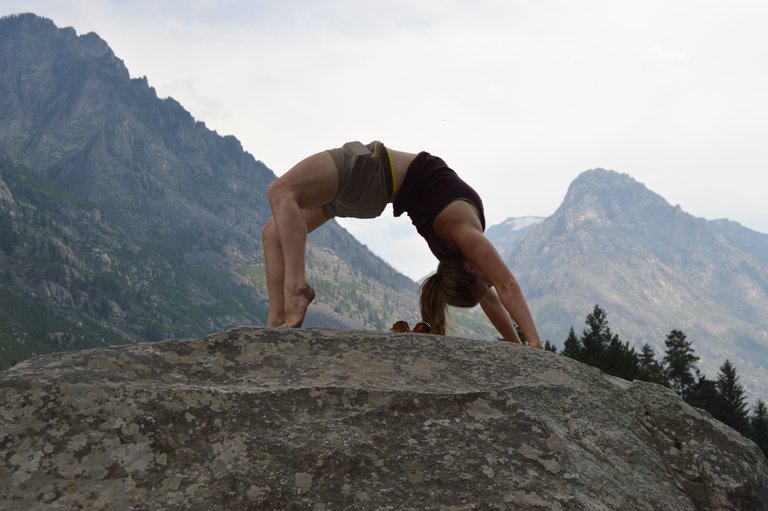I first learned to practice yoga from a very amazing and beautiful soul. She was soft and calm and taught me how to learn to love my self a little more every time I went to her class. She also taught me how to become aware of my body as I moved through beautiful flowing sequences. Without even specifically saying certain cues, I learned some of the necessities of a safe and accurate pose...through feelings and sensations in my body.
There was always one problem in my practice, however, and that was that I felt a sharp sensation in my lower back every time I went through my favorite sequence, the vinyasa, that involved upward dog. And upward dog was my favorite part. I loved the heart opener and the strength I gained through my shoulders. But I didn't love the lower back sensation that was becoming a problem beyond discomfort.
I had suffered from lower back pain for many years and the reason I found the physical practice of yoga was because of sciatica. I often blamed the lower back pain on my larger chest. Through yoga I was able to relieve the sharp nerve pain by strengthening my lower back, but still experienced lower back pain. Throughout several years of practicing and teaching, I finally have realized why.
I wish I could remember the first person who suggested the release of my glutes on most yoga poses. No squeezing the butt during upward dog, cobra, or back bends?! I thought for quite some time that squeezing the glutes during these poses "protected" my spine.
What I now know is that the rotation of the pelvis, along with releasing the glutes, is absolute KEY in any pose involving a back bend or extension. Squeezing the butt can actually cause problems with compression of the lumbar spine, which is often why individuals will often feel pain in those poses. Instead of clenching or squeezing, awareness of the actual action of tilting the pelvis back and lengthening through the tailbone toward the heels helped me eradicate the pain and create relief!
This is also applicable to many standing poses and positions. Warrior 1 is a classic pose of low back compression issues. While clenching the cheeks may not be as common of a pattern in this pose, the release of the pelvic muscles causes the pelvis to excessively tilt forward and compress the vertebrae. This often happens because the back heal is down in Warrior I, which means that the lower back has to work extra hard to bring the pelvis toward square. This causes the left hip to disengage and pull down and back, leading to an excessive forward tilt of the pelvis. The action of "lengthening the tailbone toward the floor" (tilting the pelvis slightly back, but not too much to clench or tuck) is extremely helpful in the neutralization and stabilization of the spine in addition to strengthening the abdominals.
In standing back bend, it is classic practice to squeeze the glutes, but the same principle applies. Try releasing the glutes and creating space in the lower back by drawing your tailbone toward your heals! You may notice a slight release in the spine and an engagement of the lower core. Add in a pelvic floor engagement on an exhale and you're really onto something! ;)
And in poses like cobra and wheel, allow the butt to relax so that the core can do the heavy lifting!
If you've made it this far through the yoga explanation, congratulations. It's important that I mention that this applies to many of your normal actions and postures in your everyday moments. Notice the positioning of your pelvis when you sit or stand. Often, when we aren't mindful, we will allow the pelvis to tilt in one direction or the other, causing long-term compression and damage to the spine. Releasing the glutes, and drawing the tailbone toward the floor will more than likely create the relief you yearn for if you suffer from lower back pain.
Plus, as I always say in my classes, "we have enough tight a**es in this world. We all need to loosen up a little!"
Namaste'
